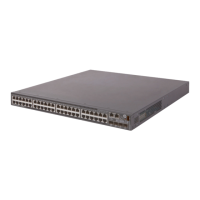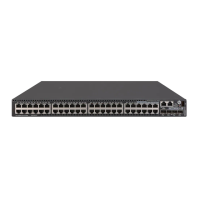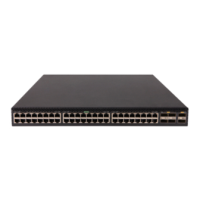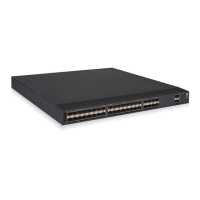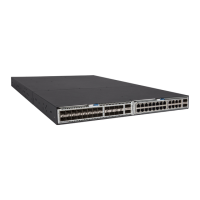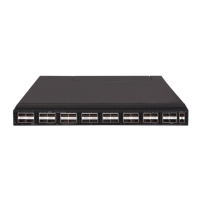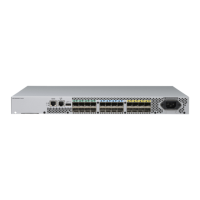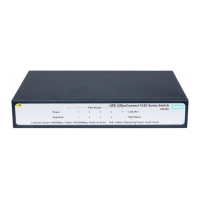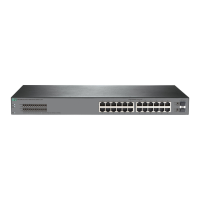3
combo enable
Use combo enable to activate the copper or fiber combo port of a combo interface.
Syntax
combo enable { copper | fiber }
Default
The copper combo port of a combo interface is activated.
Views
Ethernet interface view
Predefined user roles
network-admin
Parameters
copper: Activates the copper combo port. In this case, use twisted pairs to connect the port.
fiber
: Activates the fiber combo port. In this case, use optical fibers to connect the port.
Usage guidelines
A combo interface is a logical interface that physically contains one fiber combo port and one copper
combo port on the device panel. The two ports share one forwarding interface. As a result, they
cannot work simultaneously. When you activate either port, the other port is automatically disabled.
You can select to activate the copper combo port or fiber combo port.
Before using this command, perform the following tasks according to the marks on the device panel:
• Determine the combo interfaces on your device.
• Identify the two physical interfaces that belong to each combo interface.
Examples
# Activate the copper combo port of combo interface GigabitEthernet 1/0/1.
<Sysname> system-view
[Sysname] interface gigabitethernet 1/0/1
[Sysname-GigabitEthernet1/0/1] combo enable copper
# Activate the fiber combo port of combo interface GigabitEthernet 1/0/1.
<Sysname> system-view
[Sysname] interface gigabitethernet 1/0/1
[Sysname-GigabitEthernet1/0/1] combo enable fiber
default
Use default to restore the default settings for an interface.
Syntax
default
Views
Ethernet interface view
Predefined user roles
network-admin
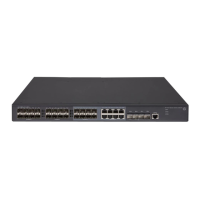
